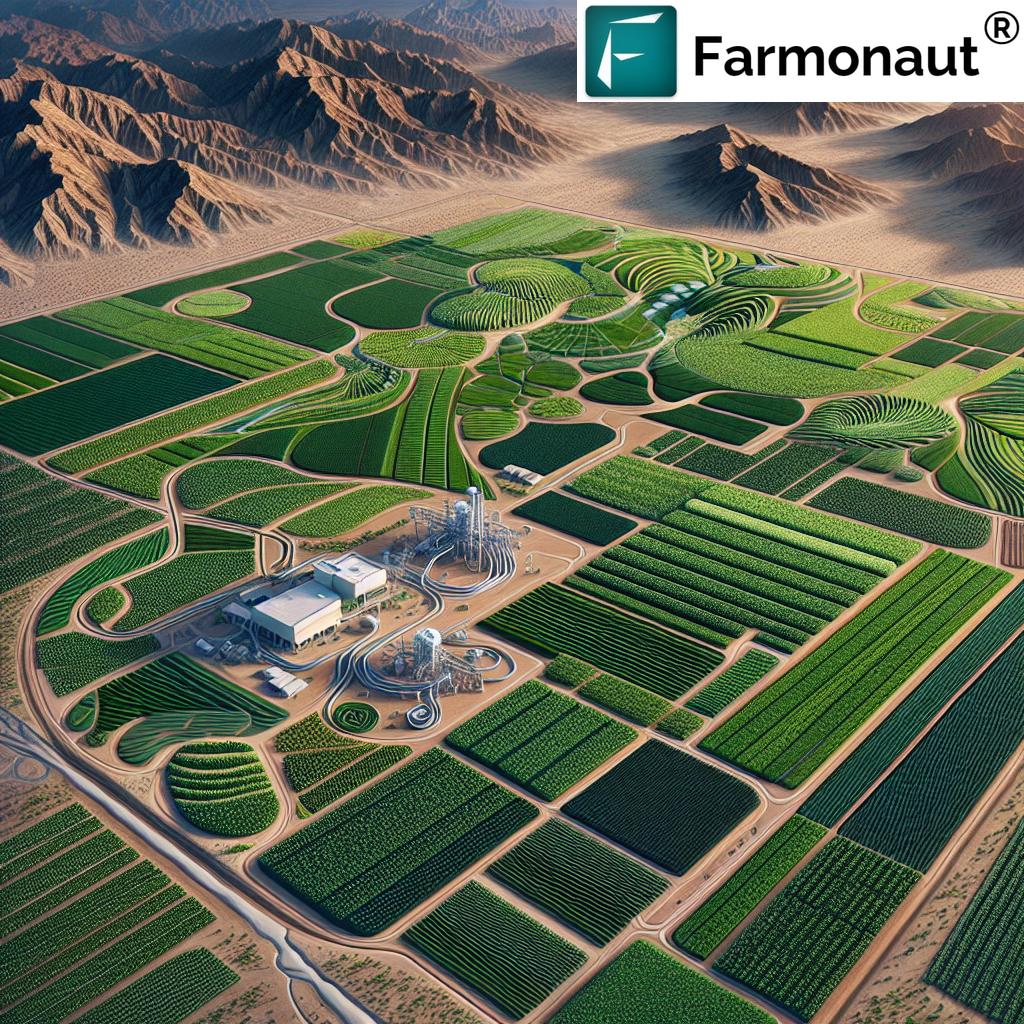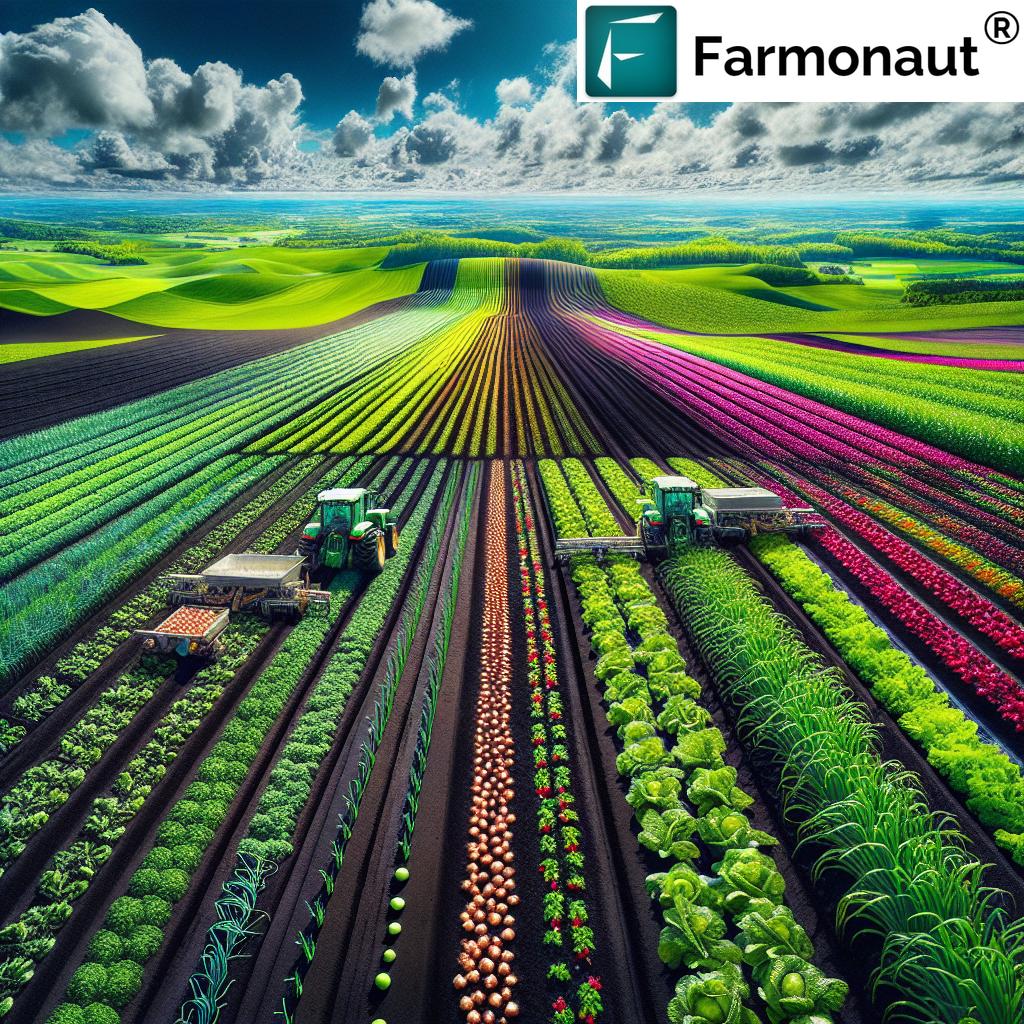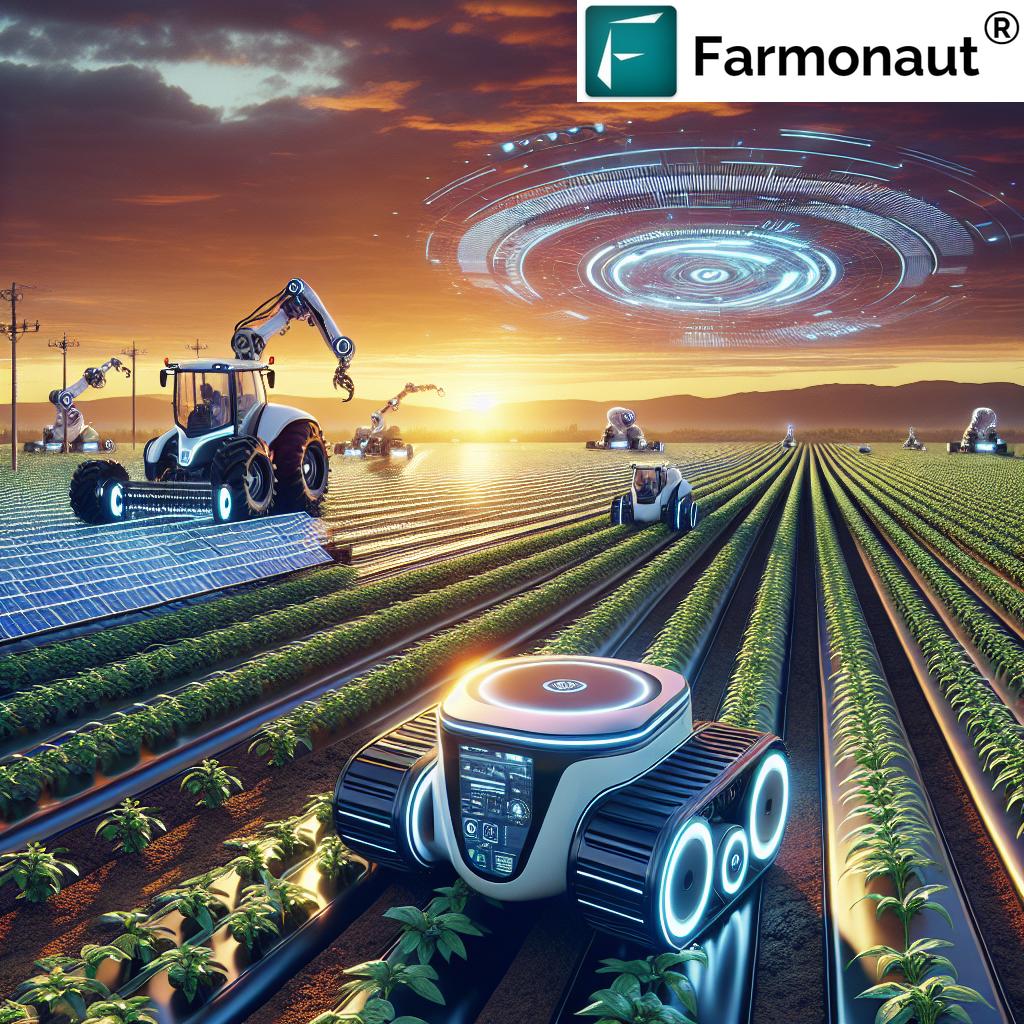Wyoming Agriculture Products 2025: Sustainable Insights
Meta Description: Explore Wyoming agriculture products in 2025—sustainable practices, crop diversification, and environmental stewardship are reshaping the landscape of agriculture in Wyoming, sustaining tradition amid innovation for a resilient rural future.
“In 2025, over 60% of Wyoming’s farms adopted crop diversification for resilient, sustainable agriculture.”
Table of Contents
- Wyoming Agriculture in 2025: Sustaining Tradition Amid Innovation
- Wyoming Agriculture Products: Key Livestock & Crops
- Technological Advancements & Sustainable Practices in Wyoming Agriculture
- Crop Diversification: Resilience for Agriculture in Wyoming
- Environmental Stewardship: Sustainability as a Cornerstone
- Wyoming Agriculture Products & Sustainability Practices Overview
- Agritourism and Economic Diversification in Wyoming’s Rural Sector
- Challenges and Future Outlook for Wyoming Agriculture
- Empowering Agriculture Wyoming: Farmonaut’s Satellite-Driven Sustainable Solutions
- Frequently Asked Questions: Wyoming Agriculture Products 2025
Wyoming Agriculture in 2025: Sustaining Tradition Amid Innovation
When most people hear “Wyoming,” sprawling open spaces, vast rangelands, and rugged terrain are what come to mind. Yet, agriculture in Wyoming remains a vital component of the state’s economy and a link to its deep-rooted rural heritage. In 2025, agriculture Wyoming stands as a testament to the successful balance of tradition and innovation, operating at the forefront of sustainable agricultural practices and environmental stewardship.
The state is known for its diversified agricultural sector, with ranching as the primary player. However, the landscape is rapidly evolving: wyoming agricultural products are no longer limited to cattle and sheep. Thanks to innovation, strategic crop diversification, and environmental conservation, Wyoming’s agricultural producers are reshaping how we think of Agriculture of Wyoming in the American West.
Wyoming Agriculture Products: Key Livestock & Crops
Ranching remains the backbone of the agricultural sector in Wyoming as we step into 2025. The picture of cattle and sheep grazing across thousands of acres encapsulates both an agricultural tradition and an economic powerhouse. Let’s examine what makes Wyoming agriculture products unique on the national stage:
Livestock Production
Cattle are the cornerstone of Wyoming’s agricultural output. The state consistently ranks among the top for cattle inventory. Wyoming is renowned for high-quality beef, with ranchers emphasizing sustainable grazing practices to maintain pasture health and soil integrity. Meanwhile, sheep ranching holds historic and continuing importance—both in wool and meat production—contributing significantly to state and national markets.
Crop Production
Crop production in Wyoming faces challenges due to elevation, semi-arid climate, and short growing seasons. However, farmers have adapted and innovated:
- Alfalfa hay: The most predominant crop, grown extensively to feed livestock.
- Wheat and barley: Cultivated at a smaller scale, mainly due to climatic limitations, but important for diversification.
- Specialty crops: Recent years (culminating in 2025) have seen a growing interest in specialty crops—such as hemp and pulse crops (lentils and peas)—that align with local soil and weather conditions.
Wyoming Agriculture of 2025: Emphasis on Sustainable Practices
- Rotational grazing is widely used to prevent overgrazing and preserve rangeland health.
- Precision irrigation techniques are adopted to address the limited water resources of the region.
- Soil health monitoring and data-driven management—key to maximizing productivity in challenging environmental conditions.
“Wyoming reduced agricultural water usage by 18% in 2025 through innovative sustainable practices and environmental stewardship.”
Technological Advancements & Sustainable Practices in Wyoming Agriculture
The advancements of the last few years have transformed the agricultural sector in Wyoming. As 2025 progresses, farmers and ranchers are no longer merely stewards of tradition—they are innovators in agricultural technology and environmental sustainability.
Investment in Precision Agriculture
- Use of precision agriculture tools (GPS-guided equipment, sensors, and drones) is helping producers optimize inputs and improve yields. This is especially critical in a state where water is a precious and limited resource.
- Remote sensing and satellite-based monitoring offer actionable data on soil health, irrigation needs, and crop progress.
- Adoption of AI-powered advisory and traceability systems—enabling real-time monitoring and responsive management of crop and livestock health.
Water Conservation and Management
Droughts and changing climate patterns put tremendous pressure on Wyoming’s farms and ranches. As a solution, producers employ advanced irrigation systems and scheduling based on real-time data. New systems enable:
- Precise application of water matching crop needs, drastically reducing waste.
- Integration of weather forecasts and soil moisture sensors for targeted irrigation scheduling.
- Recycling and reuse of runoff, ensuring sustainable management of every precious drop.
Sustainable Grazing Management
Rotational and adaptive grazing have become mainstream in 2025, with ranchers emphasizing biodiversity, pasture health, and coexistence with wildlife species.
- Ranchers reseed rangelands and manage stocking rates for long-term productivity.
- Sustainable grazing practices are not only preserving Wyoming’s iconic landscapes but are also improving forage quality and supporting the broader ecosystem.
Crop Diversification: Resilience for Agriculture in Wyoming
With over 60% of Wyoming’s farms embracing crop diversification by 2025, the agricultural sector is now anchored in resilient practices that buffer against market and climatic shocks. Here’s how:
- Pulses and legumes like peas and lentils are now prominent among Wyoming agricultural products—improving soil health and offering new streams of income.
- Cultivation of hemp, specialty grains, and oilseeds has expanded under both open-field and high-tunnel systems—illustrating innovation and adaptation to local climatic conditions.
- Rotation and diversification allow producers to disrupt disease cycles and reduce fertilizer and pesticide use, while also optimizing water usage.
This diversification of wyoming agriculture products continues to benefit both economic and environmental sustainability.
Environmental Stewardship: Sustainability as a Cornerstone
The environmental importance of agriculture Wyoming has never been more evident. In 2025, the sector is viewed as a partner in addressing broad-scale challenges like climate resilience, carbon sequestration, and resource conservation—not just as a resource user.
- Producers employ regenerative practices—reduced tillage, integrated crop-livestock systems, and cover cropping—to build organic matter, improve soil structure and increase carbon capture.
- Livestock producers adopt strategies to reduce methane emissions, thus actively participating in climate-smart agriculture.
- Renewable energy is on the rise in agricultural operations, with wind and solar panels becoming fixtures on many rural properties.
- Conservation programs partner with producers to restore habitats, prevent erosion, and maintain wildlife corridors.
Our team at Farmonaut is especially passionate about supporting sustainability. With solutions like carbon footprinting, we enable Wyoming agricultural producers to quantify and manage their emissions, making real progress toward climate goals, and participating in new carbon markets.
Wyoming Agriculture Products & Sustainability Practices Overview
| Crop/Product | Estimated 2025 Production | Sustainable Practice Implemented | Environmental Benefit | Diversification Status |
|---|---|---|---|---|
| Cattle (Beef) | Approx. 1.3 million head | Rotational grazing, improved pasture management | Soil health, biodiversity, erosion control | No |
| Sheep & Wool | ~360,000 head | Rotational grazing, wildlife-friendly fencing | Habitat preservation, reduced overgrazing | No |
| Alfalfa Hay | 1.2 million tons | Precision irrigation, reduced fertilizer use | Water conservation, soil fertility | Yes |
| Wheat | 90,000 acres | Crop rotation, reduced tillage | Soil structure, pest control | Yes |
| Barley | 60,000 acres | Efficient irrigation, integrated pest management | Reduced runoff, pollinator support | Yes |
| Sugar Beets | 30,000 acres | Soil health monitoring, nutrient management | Nutrient runoff prevention | Yes |
| Pulse Crops (Peas, Lentils) | 18,000 acres | Legume rotation, limited chemical inputs | Nitrogen fixation, reduced emissions | Yes |
| Hemp (Industrial) | 6,500 acres | Organic practices, minimal irrigation | Carbon sequestration, low water use | Yes |
Agritourism and Economic Diversification in Wyoming’s Rural Sector
Wyoming’s agricultural sector is also a growing hub for agritourism. From ranch stays and farm-to-table experiences to educational tours and local food festivals, agritourism is bridging the urban-rural divide:
- Rural economies are buffered from commodity market volatility by the influx of visitors and increased direct sales of local agricultural products.
- Tourism strengthens the link between Wyoming agricultural producers and environmentally-minded consumers, enabling producers to highlight their stewardship efforts and value-added, sustainable products.
Our real-time traceability platform allows producers to assure customers of their practices, enhancing transparency and trust—crucial value in today’s premium food markets.
Challenges and Future Outlook for Wyoming Agriculture
Despite the remarkable progress in the sector, agriculture in Wyoming in 2025 also faces distinct challenges:
- Climate variability threatens both agricultural productivity and livestock forage, underscoring the need for research into drought-resistant crops and enhanced resource management.
- Market access remains limited—Wyoming’s rural location distances many producers from large consumer markets, heightening logistics and transportation costs.
- Demographic shifts and changing labor markets underscore the importance of next-generation workforce development in both production and agri-business.
- Infrastructure for water management and digital connectivity continues to be a key focus for state and local policymakers.
For producers looking to scale, our large scale farm management suite offers decision-support and operational efficiency for managing crops, livestock, and labor across geographically dispersed properties—all via satellite automation.
Access to financial products is also a concern for many agricultural producers. We make loan and insurance verification efficient and transparent with our crop loan and insurance solution, harnessing satellite data to assist banks and insurers with fast, accurate risk assessments.
Fleet managers navigating Wyoming’s vast ranchlands can tap into our fleet management tools for real-time vehicle and machinery optimization, reducing operational costs and supporting safer, greener logistics in the agricultural sector.
Empowering Agriculture Wyoming: Farmonaut’s Satellite-Driven Sustainable Solutions
As the landscape of agriculture in Wyoming continues to evolve, our mission at Farmonaut is to make affordable, science-backed insights available for every producer, policymaker, and stakeholder. Here’s how our offering supports these goals:
- Satellite-Based Monitoring: We deliver high-resolution, multispectral imagery to monitor crop health, assess soil conditions, and manage rangelands—directly accessible on our web and mobile platforms. This data helps optimize irrigation, inputs, and land use everywhere in Wyoming.
- Jeevn AI Advisory System: Our AI-based tool analyzes field-level satellite data and weather forecasts, providing actionable suggestions to increase productivity and reduce environmental impact.
- Blockchain Traceability: With our blockchain-based traceability solution, producers can assure buyers and end-consumers about sustainable origins, minimizing fraud and maximizing market access.
- Fleet and Resource Management: Automated monitoring of vehicles and equipment for optimal logistics and proactive maintenance, keeping large-scale operations efficient.
- Environmental Footprinting: We offer carbon footprint tracking and environmental dashboards—vital for regulatory compliance and sustainable certification.
- Financial Services Integration: Satellite-based crop assessment for loan and insurance validation—helping farmers access credit swiftly and securely.
Get started with our satellite API for custom solutions, or check out our API developer documentation to integrate the power of remote sensing directly into your own agri-business platform.
Start Your Farmonaut Subscription
Frequently Asked Questions: Wyoming Agriculture Products 2025
-
What are the top Wyoming agriculture products in 2025?
The main Wyoming agricultural products in 2025 include beef cattle, sheep and wool, alfalfa hay, wheat, barley, sugar beets, and increasingly, specialty crops like hemp and pulse crops (lentils and peas). -
How is agriculture in Wyoming adapting to climate challenges?
Producers are turning to drought-resistant crops, advanced irrigation technologies, rotational grazing, and precision agriculture tools, maximizing productivity while reducing environmental impact. -
What sustainable practices are Wyoming farmers adopting?
Leading practices include rotational and adaptive grazing, no-till and reduced-till farming, integrated pest management, cover cropping, energy use optimization, and use of blockchain for product traceability. -
How can satellite technology support Wyoming’s agricultural sector?
Satellite monitoring provides real-time insights into soil health, crop vitality, and water usage; it also supports resource management, carbon accounting, and traceability for Wyoming agri-businesses. -
Is Farmonaut available for all types of Wyoming agricultural producers?
Yes, we support individual farmers, large-scale businesses, and government stakeholders in Wyoming—our modular platform allows everyone to access data-driven insights and services tailored for their operation size and needs. -
Where can I access Farmonaut’s web or mobile platform?
Web App |
Android App |
iOS App
-
Is Farmonaut an agri-marketplace or regulatory agency?
No, we are not an online marketplace, manufacturer, nor a regulatory body. We provide satellite-driven insights and digital tools to empower decision-making for agriculture, mining, and infrastructure sectors.
Conclusion
Agriculture in Wyoming in 2025 is a nuanced blend of tradition and modernity—anchored in its cattle ranching legacy while being propelled into the future by climate-smart, data-driven innovation. Wyoming’s agricultural products and rural communities are thriving amid challenges, thanks to a dedicated focus on sustainability, diversification, and environmental stewardship.
We at Farmonaut remain committed to supporting every producer in Wyoming on this journey. Whether you’re monitoring soil health, optimizing water, or seeking value-added transparency in agri-food chains, our satellite-based solutions are at your fingertips—helping Wyoming’s agricultural sector continue to be a resilient, dynamic, and vital contributor to America’s food system and cultural heritage in 2025 and beyond.













